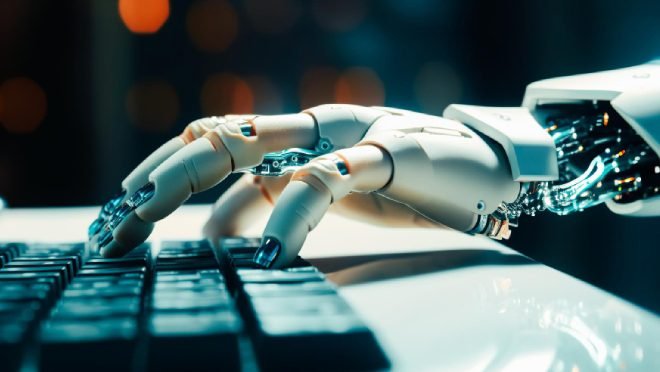Table of Contents
Highlights
- India’s robotics startups ecosystem is scaling fast, backed by talent, funding, and “Make in India” initiatives.
- Startups like CynLr, Genrobotics, and Unbox Robotics are solving real-world problems in industry and services.
- The focus is on human-centered robotics that enhance productivity, safety, and social impact.
In the vast workshops of Bengaluru, the seaside factories of Chennai, and the engineering classrooms of Kerala, a revolution is quietly brewing. India’s robotics startup ecosystem is now not only assembling imported bots, rather it is building machines, software, and real-world solutions that are indigenous and made in India. As we approach 2025, the robotics wave in India is gathering steam: funding is going up, startups are moving beyond prototypes and into scaling, and robotics being deployed for agriculture, manufacturing, and service is a real possibility. This post depicts a humane and realistic picture of what’s happening, why it matters, and a few of the startups that are notable.

Why India now?
- Talent + affordability: India has a huge supply of engineering/science talent and increasingly deep-tech labs doing mechatronics, AI and control system work. This reduces the hardware innovation cost hurdle.
- Large domestic market + unique problems: Indian startups can build solutions that solve local problems (vs. imported solutions) from agriculture (small-holder farms) to city logistics (dense cities). For example, robots that can handle uneven agricultural terrain or servicing robots in multilingual service environments.
- Funding velocity and policy momentum: According to research through Tracxn, Indian robotics startups have raised approximately US $117 million in 2024, up from ~$54 million in 2023, and ~$28.8 million in 2022
- The Indian government’s push for “Make in India” policy and attention to automation, logistics, and defence policy are critical enablers.
- Hardware differentiation: As software and AI become cluttered, startups focusing on integrating different types of sensors and mechanical systems will be able to find differentiated market problems/solutions. India’s strength will likely be in robotics systems that are not hyper-humanoids, but that fit the scale and context of India.

Key Trends Shaping Indian robotics in 2025
- “Real world” robots for industrial & logistics deployment: Robots that are not unique but serve an important purpose for high-volume, repeating tasks—autonomous vehicles in warehouses, robotic arms for smaller manufacturing, vision-based pick-and-place. In the words of one article, “robots for off-road, unpredictable environments” are evolving from concept to some pilot work.
- Domain-specific robots addressing local problems
Robotics is finding applications in agriculture, infrastructure inspection, even manhole cleaning: The startup Genrobotics Innovations is an example, having created a sewage-manhole cleaning robot to replace manual scavenging.
The bonus is about the social value, and reg alignment. - The vision, perception and autonomy stack is coming up: Robots executing tasks are “seeing & reacting” more as opposed to executing a rigid script. The startup CynLr focuses on robotic vision and manipulation, allowing robots to work on components and tasks without fixed structures. As Indian robots enter less predictable environments (construction sites and unstructured stores), the vision, perception, and autonomy stack is a key component of that effort.
- Robots with multiple modes and service bots: In some respects, while manufacturing robotics are established, service robotics—hospitality/retail/healthcare—are gaining prominence in India. For instance, a start-up can develop humanoid assistants, robot receptionists or hospital-service robots. These robots tap the English/Indian language interface, mobility, and interaction with humans.
- Network and manufacturing momentum through “Make in India”: Many start-ups focus on local manufacturing for cost optimizations, and local supply chains. This helps scalability, as well as lowers cost compared to completely imported bots.

Startup worth watching
Here are some of the Indian robotics startups that deserve attention in 2025:
CynLr
CynLr, which was established in 2019, focuses on robotic vision and manipulation systems. At the heart of the platform is a system that allows robots to identify, grasp, and assemble more complex pieces: this is hugely valuable in the Indian industrial and electronics supply chain industry and has been cited in reports as CynLr has been able to raise multiple funding rounds (US $8–10M) and grow internationally. That in and of itself is interesting and should make the reader curious, but their approach is especially noteworthy – they are examining the software and perception stack, which means they are aiming to help machines scale rather than building a single endpoint robot and making it work.
Genrobotics Innovations
Genrobotics is a startup established in 2017 that specialises in using robots for sewer cleaning and sanitation to mitigate hazardous manual labour. Their robot, the “Bandicoot,” is designed to replace manual scavenging, a societal issue of deep significance. They represent another case of a startup that could garner investment and government support to positively influence the community while developing robotics applications that address the very specific problem in India. Their model: social impact, robotics, and local problem.
iHub Robotics
At a very early stage, iHub Robotics is developing semi-humanoid robots (Tara Gen-1) for service, hospitality and healthcare. The company was selected to participate in NVIDIA’s Humanoid Robotics program. The challenge will be product-market fit and cost-economics, but they represent the vanguard of a movement in service robotics in India.

Unbox Robotics
Formed in 2019, Unbox Robotics is designing robots for warehouses and for-sorting in light of India’s growth in e-commerce and logistics. According to analytics, this company is on the radar as an emerging company.
In a country where logistics cost is relatively high, automation in warehouses could have a disproportionate impact.
Challenges and Caution
- Hardware is challenging: Unlike pure software, robotics is constrained by physical components, logistics, durability, and maintenance. Cost overruns, unforeseen crises in the supply chain, and manufacturing issues remain an actively significant risk.
- Unit economics: Early robots will be expensive. To achieve scale in cost-sensitive markets like India, the costs and benefits of robotic systems must be significant. If a robot is priced at ₹30 lakh without generating sufficient savings or revenue, it won’t make sense to adopt.
- Talent and research and development: Building a world-class robot can involve the complex integration of mechanical design, sensors, control systems, artificial intelligence, and integration of hardware/software systems. Start-ups need to recruit this expertise or partner with academic/professional space if they want to produce or replicate that combination and production of talent. Otherwise the client or customer can achieve that competing version more broadly in other geographies.
- Global competitiveness: Countries like China, Korea, Japan, and the US are heavily investing in robotics. Indian start-ups will have to sprint ahead in speed (reach scale faster) or find unique niches where the Indian context gives them an advantage.
- Deployment and support/downtime: Robots in India will operate in locations and conditions where support infrastructure (spare parts, trained technicians etc.) is so weak it adds risk.

Conclusion
In 2025, India’s startups in robotics will occupy neither of the two extremes of a utopian sci-fi future, nor an endless trudge over hardware slogs. It will be realistic, hopeful and incremental, somewhere in between. The most remarkable advancements in robotics will not be humanoids performing some dance on stage, instead, it will be silent, safe machines entering factories, farms, hospitals, and logistics yards exploring Indian problems built by Indian minds. The potential of this wave is fundamentally human: safer workers, more productive farms, smarter factories, and greater dignity.
For those visualizing this space, the question will not only be – “which robot will walk?” instead it will be – “which startup will deliver value to India’s unique complexity?” With all of this in mind, the founders of robotics startups also represent the earliest tremors of the potential seismic shifts taking place. CynLr, Genrobotics, iHub Robotics, Unbox Robotics is new life way of thinking: If they succeed, they just might help India leapfrog conventional manufacturing and import-centric robotics models to create its own physical-AI version of rush.
Ultimately, the story of robotics in India is not about robots replacing humans; it’s about humans enhancing capabilities. The future is less about robots taking over and more about robots taking care of the burden so humans can do more: think, create, care, connect. And given India’s unique and varied dynamic environment, that’s a future worth seeing.